Like many people in southern Ontario, we are lucky to host a pair of Northern Cardinals in our yard. I’ve often seen the parents busily feeding fledglings that will perch on our fence and call for treats. I haven’t hunted for the nesting site, though. In the spring of 2016, I accidentally found a pair of Cardinals nesting very low in a shrub at Lakeside Park in Mississauga. As I visited over several weeks watching the arrival of the warblers of spring I kept an eye on the parents, nest and eventually the fledglings. I was wondering how long it would take these Northern Cardinals to raise their family.
UPDATE: 2021 04 29 I read an interesting post from a member of the Hamilton Naturalists’ Club today about the Northern Cardinals nesting on their property. He says the average incubating period is 12.8 days and that in his version of Birds of the World, the earliest recorded laying date for Ontario is April 13. It doesn’t tell me how long it takes to raise the chicks to independence but it means that this fledgling could be one from the nest I was watching during migration.
How to Find a Cardinal’s Nest
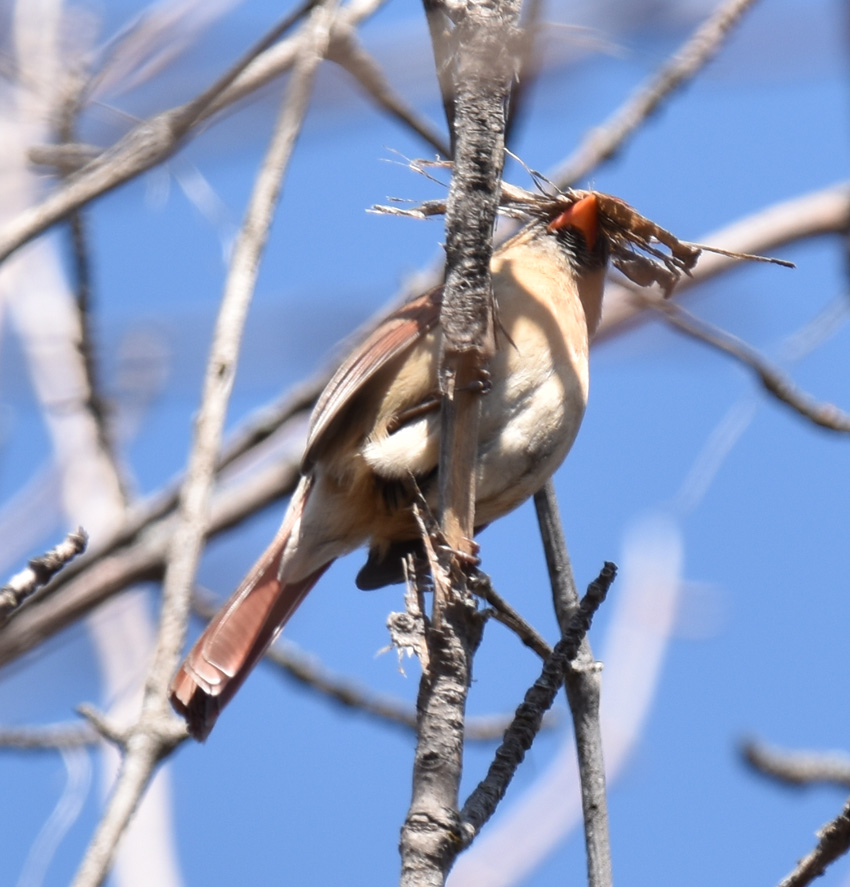
On April 18, the Cardinals were building their nest.
One of the easiest ways to find a bird’s nest is to follow the parents. Although they will try to wait till you are distracted, eventually you will see them coming and going from one location more than any other. When the pair I watched were feeding their young in the nest, they would take quite a random approach to their chicks. They would land several times in trees and bushes near the nest before finally swooping quickly in and out.
Incubation Time
On May 7 when I visited the park, the female Cardinal was incubating either eggs or chicks. There was no feeding activity so I suspect they were eggs. (Of course I stayed well back to avoid disturbing her.)
I did, however, approach a bit closer briefly when a Common Grackle began making menacing moves towards the nest despite the defensive behaviour of both the male and female Cardinals. The Grackle was more wary of me than of them and left.
Later that day, I saw the parents successfully drive away another Grackle.
Voracious Cardinal Chicks
By May 10, the chicks were being fed. The parents were arriving steadily every few minutes with more food.
Both chicks got fed each time I watched.
The mother fed them three times for each time the father fed them. But I noticed him giving her food once, so he may have been gathering insects for her to provide to the chicks.
He did feed both chicks as well.
Both birds would look around before leaving the nest.
The mother fed both chicks again just minutes later.
After having fed them yet again, she stayed to warm the chicks for a while.
I
I left her and the family in peace and moved on to search for more warblers.
Do Both Cardinals Feed Their Chicks?
On May 11, I watched briefly. Both parents arrived to feed the chicks.
On May 12, the feeding frenzy continued. Pity the parents!
The Cardinals didn’t seem to mind me as I stayed far back but they certainly knew I was there.
I watched the male arrive and give food to the female.
He then fed some more food to a chick. She fed the other chick.
Eventually, the mother settled in to warm up the chicks again.
Did They Lose Their Nestlings?
May 13 was a worrying day. I saw the mother Cardinal taking a bath in the drainage creek. I didn’t see, though, either bird visiting the nest. I worried that a predator had snatched the young.
I thought about checking the nest but I didn’t want to risk ruining anything if the chicks were in there and fine. So I went away uneasy.
Could These Be the Same Chicks?
To my amazement, on May 15, I found the parents feeding a fledgling! I’m pretty sure there were two fledglings, actually. One was out on a bare branch and obvious. The other, if it was a youngster, was deep in a twiggy thicket. It was a bit difficult to know for sure because it’s possible the male was bringing food to the female, not a fledgling, in the thicket: you could see the male was feeding a brown bird but not enough detail to know that bird’s age.
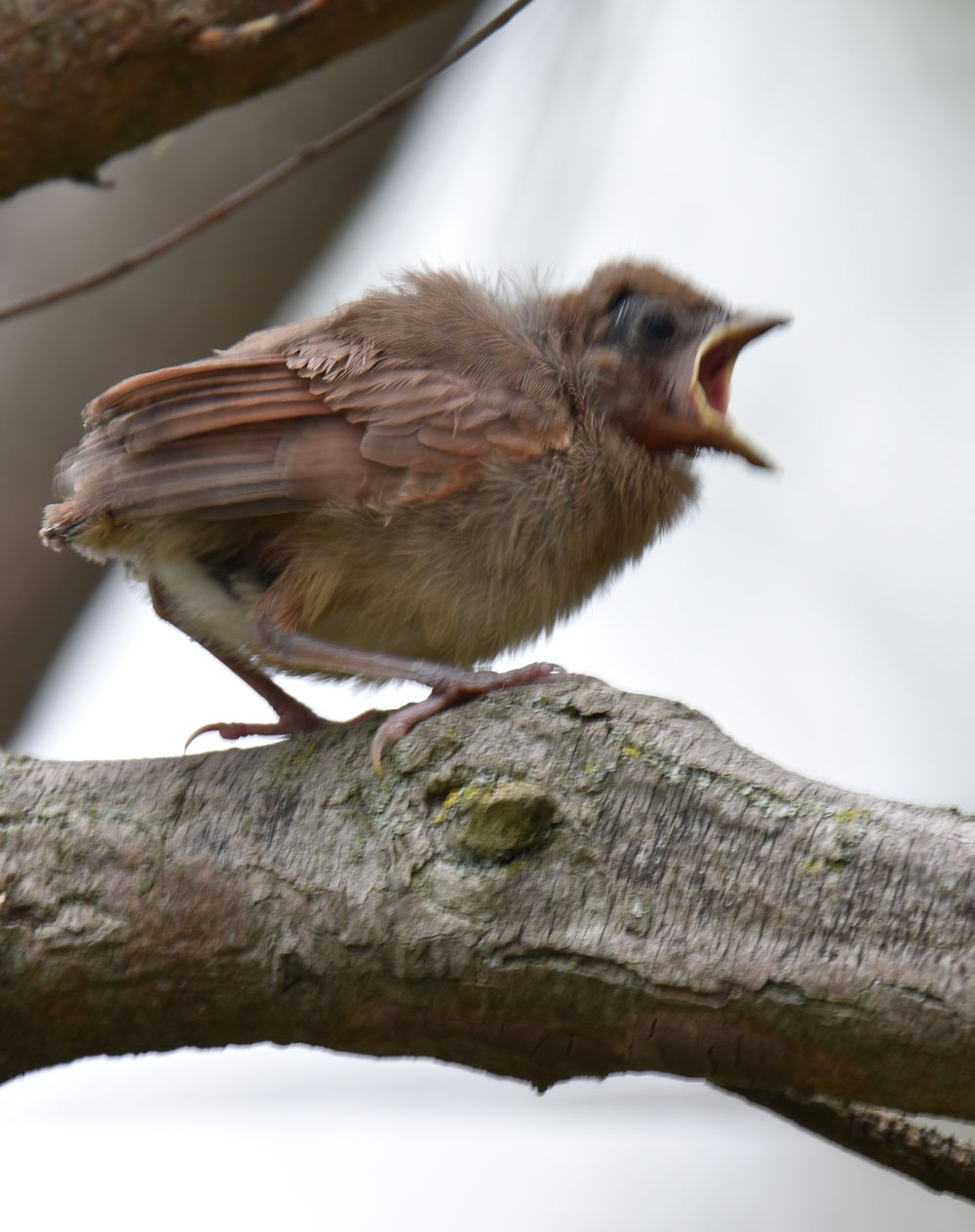
Long before I saw a parent, the chick saw one and made it’s opinion known!
At first when I saw the size of the fledgling, I thought that they must have raised a Cowbird chick. Cowbird chicks grow monstrously quickly compared to many chicks. But as soon as I saw the chick in profile, I could see it had the beak and crest and overall look of a Cardinal.
I still don’t know if this chick is from the same nest, though. The location is very, very close to the actual nest. But the size of the chick is surprising. How fast do they grow?
The chick was still willing to keep eating even after the food was gone.
It’s mother arrived shortly with another meal.
How Long Does It Take Northern Cardinals to Raise a Family?
On May 26, this fledgling was very close to the nest. Since that is 11 days later, I think there were 2 fledglings but I’m not sure.
 Although Cardinals will eat seeds from feeders they eat lots of insects and invertebrates. I think this is a snail but I don’t really want to know.
Although Cardinals will eat seeds from feeders they eat lots of insects and invertebrates. I think this is a snail but I don’t really want to know.
By my observations, this family had a nest no later than April 18 and had fledglings by May 15.
According to the Cornell University website, AllAboutBirds, Northern Cardinals usually incubate for 11-13 days and nest for 7-13 days. That would mean it could take 18 days from the start of incubation to fledging. So it’s possible, perhaps even probable, that I did see these same two parents feeding their fledged chick.
I think I watched one pair of parents raise two chicks to the fledgling stage. I’ll never be quite certain but I certainly enjoyed the glimpses of family life they shared with me. Warbler season was over, though, so I left the Cardinals alone after the 26th. I hope their chicks grew up to full-sized adults.
Related Reading
Join In
Have you watched Cardinals raising their families? Please share your experiences with a comment.

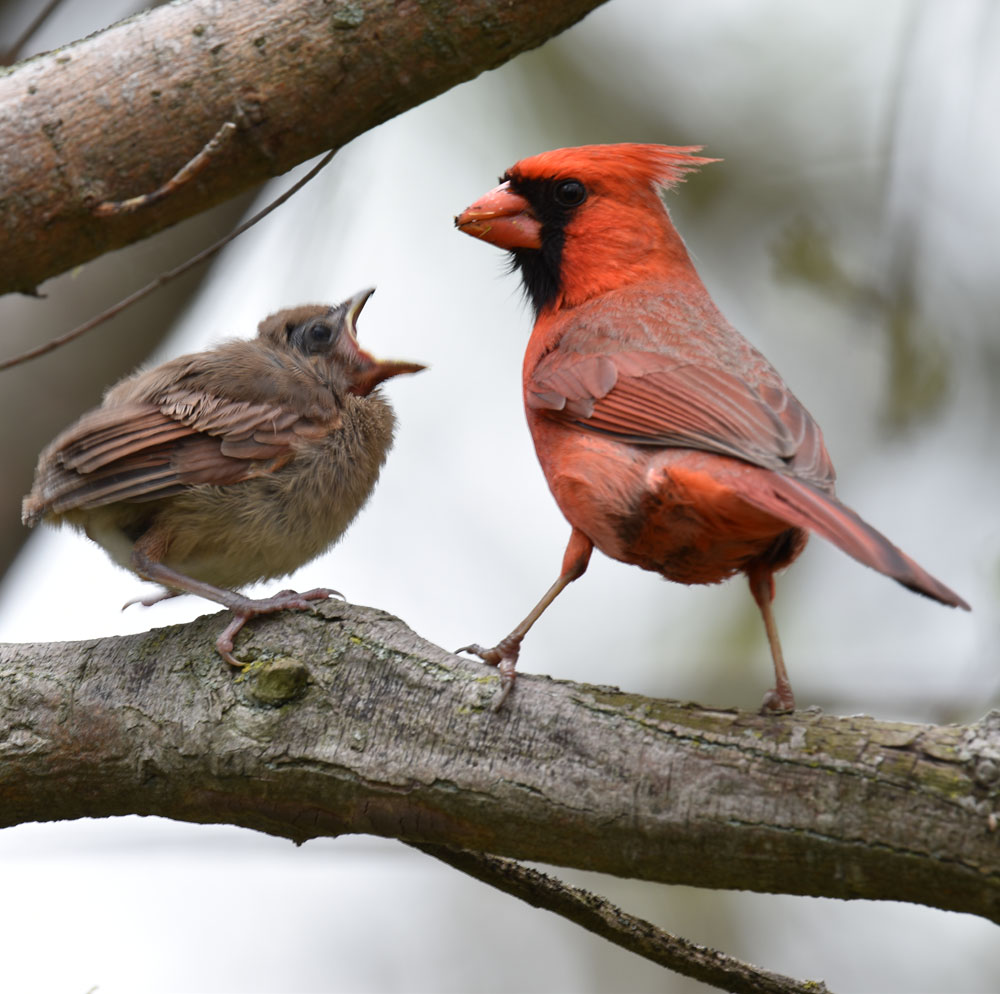
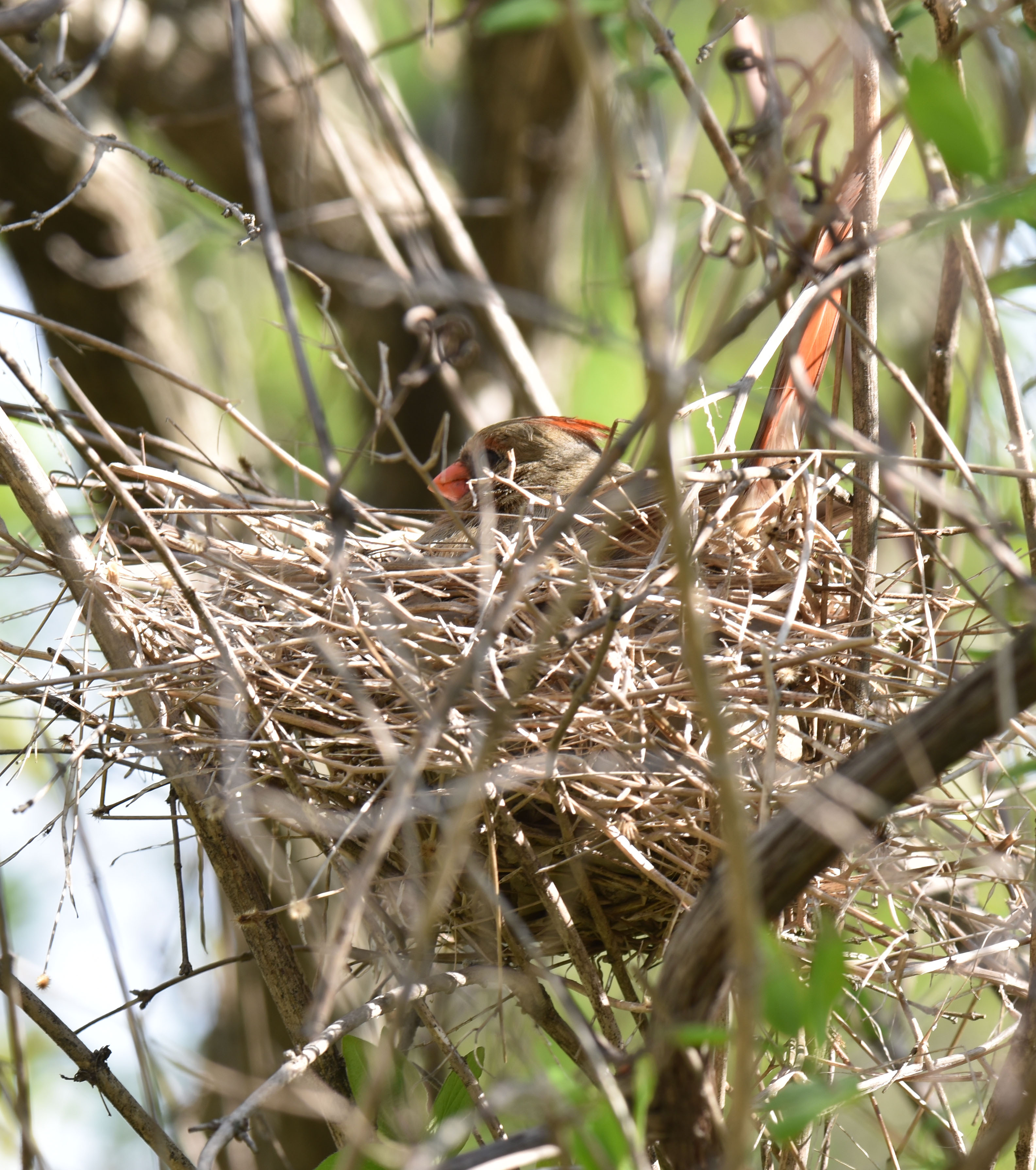
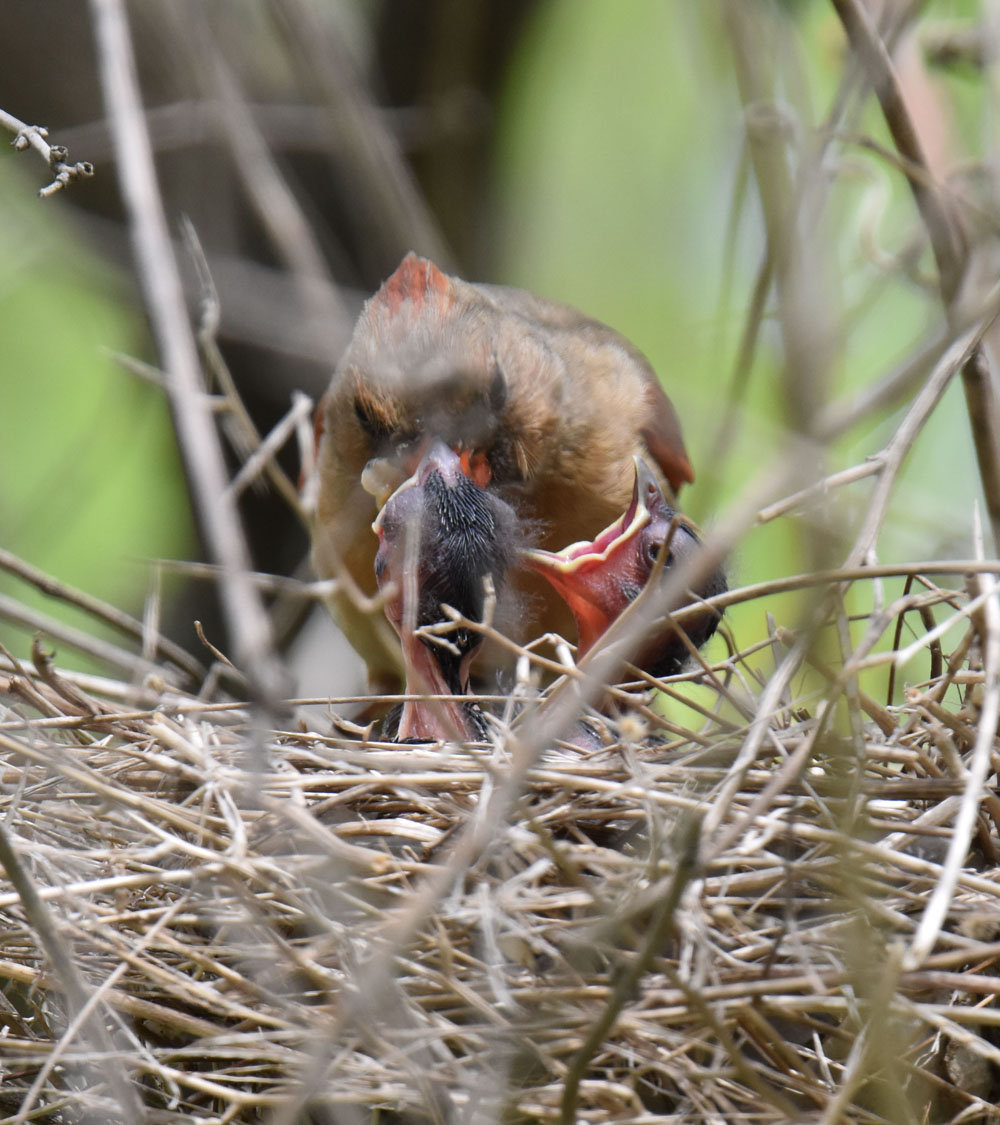
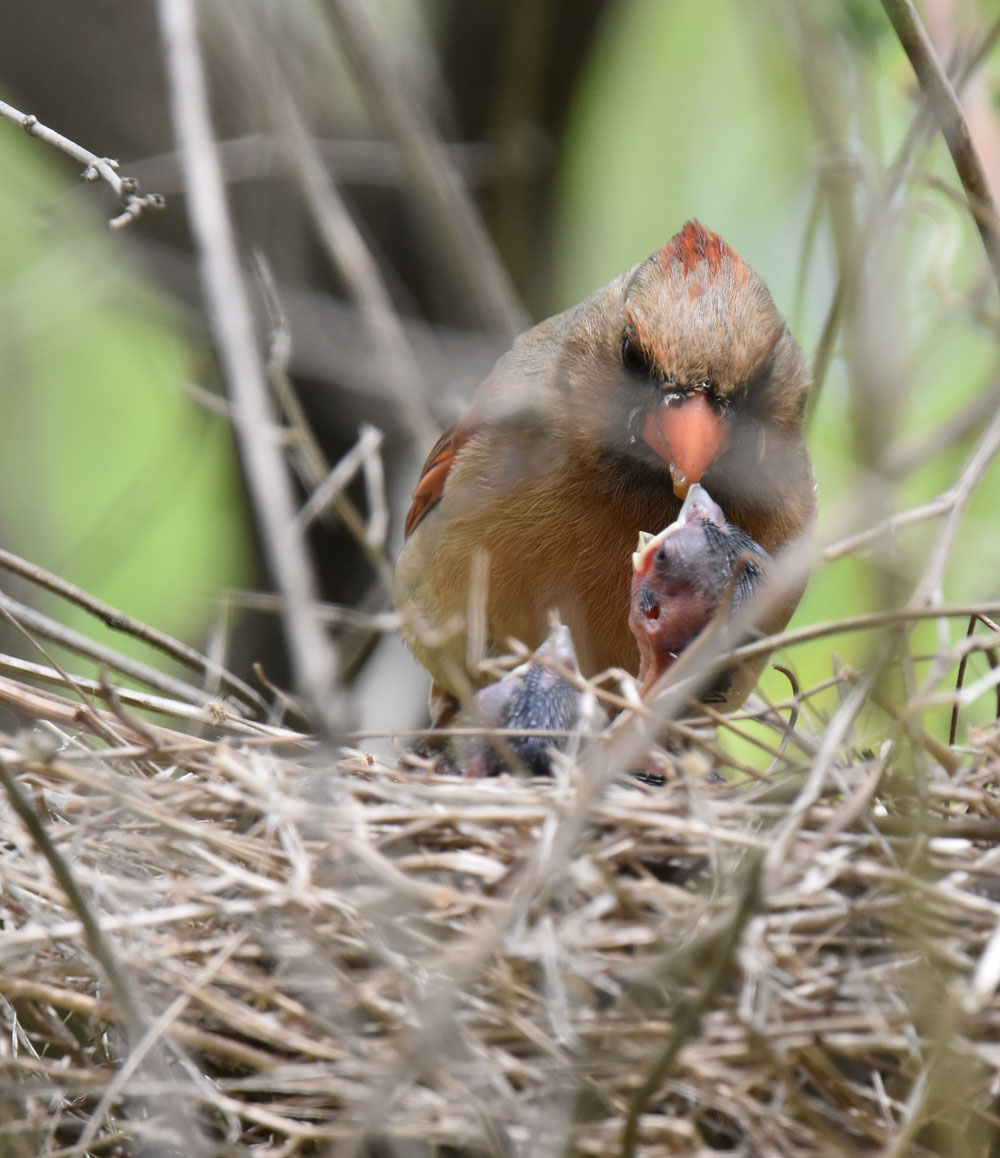

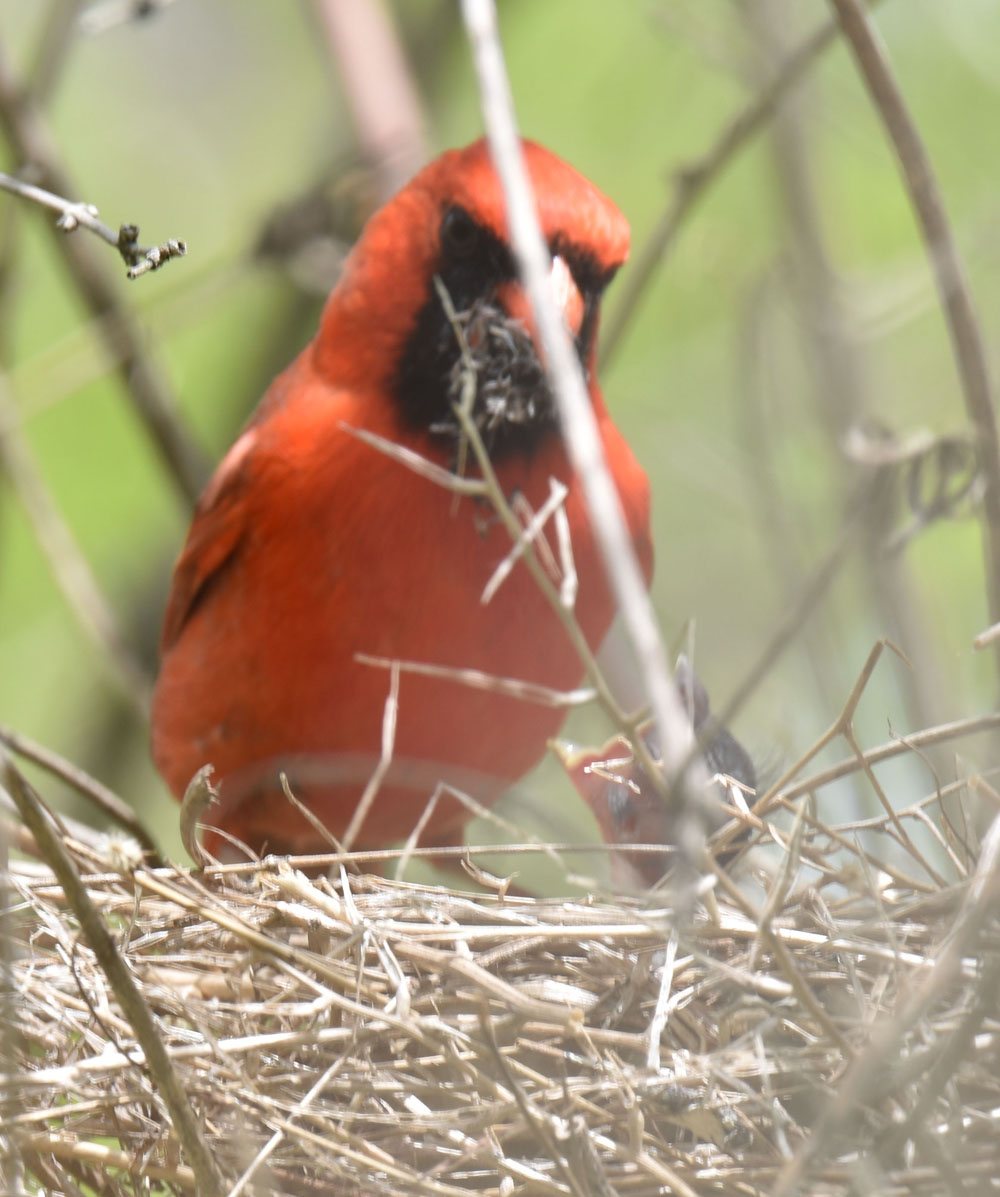
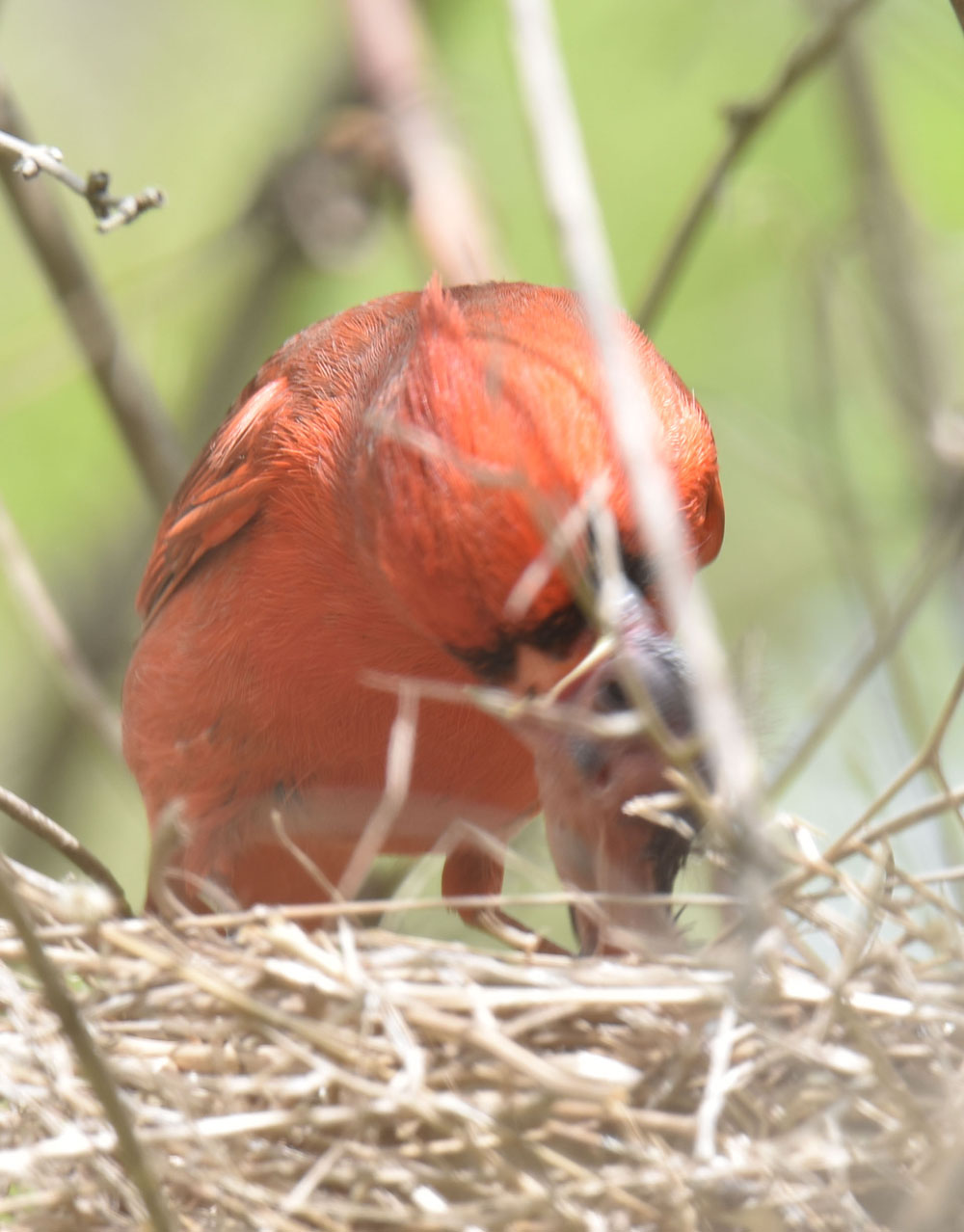

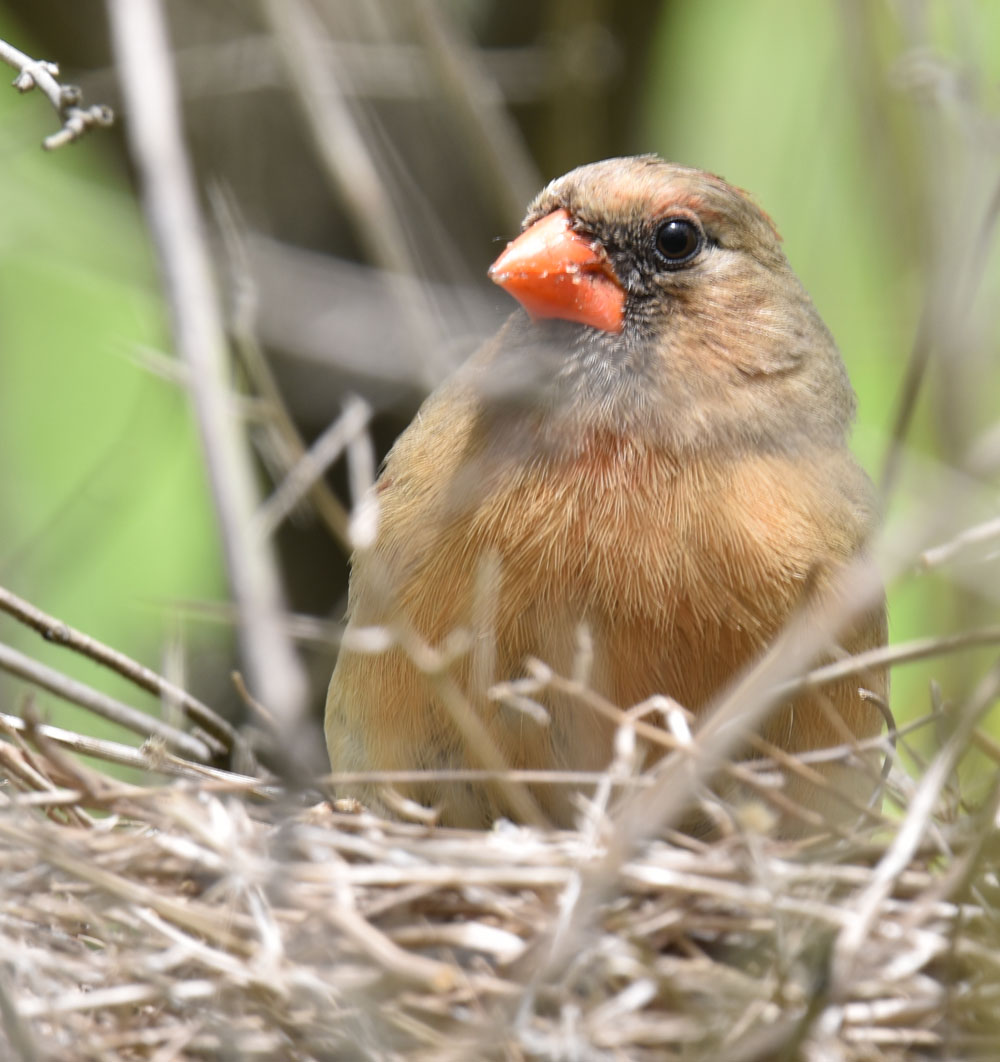
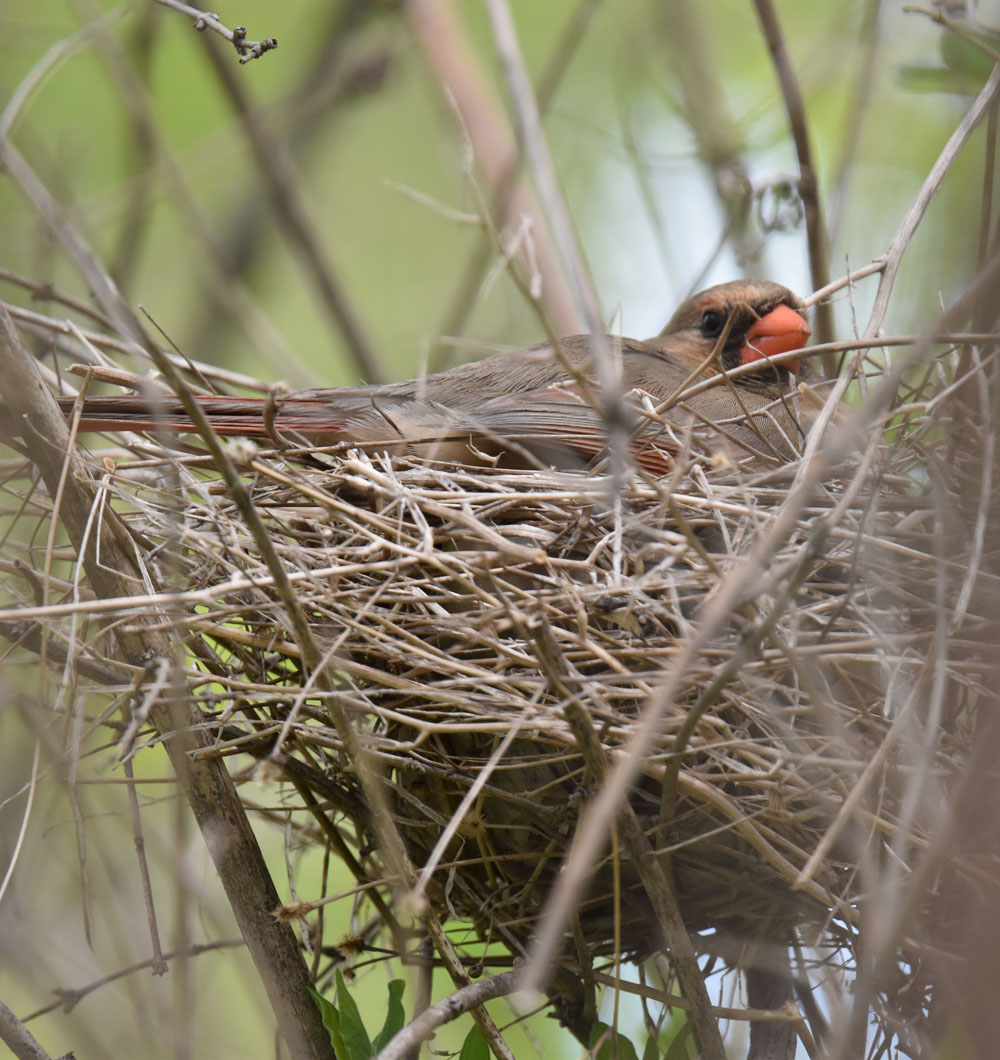

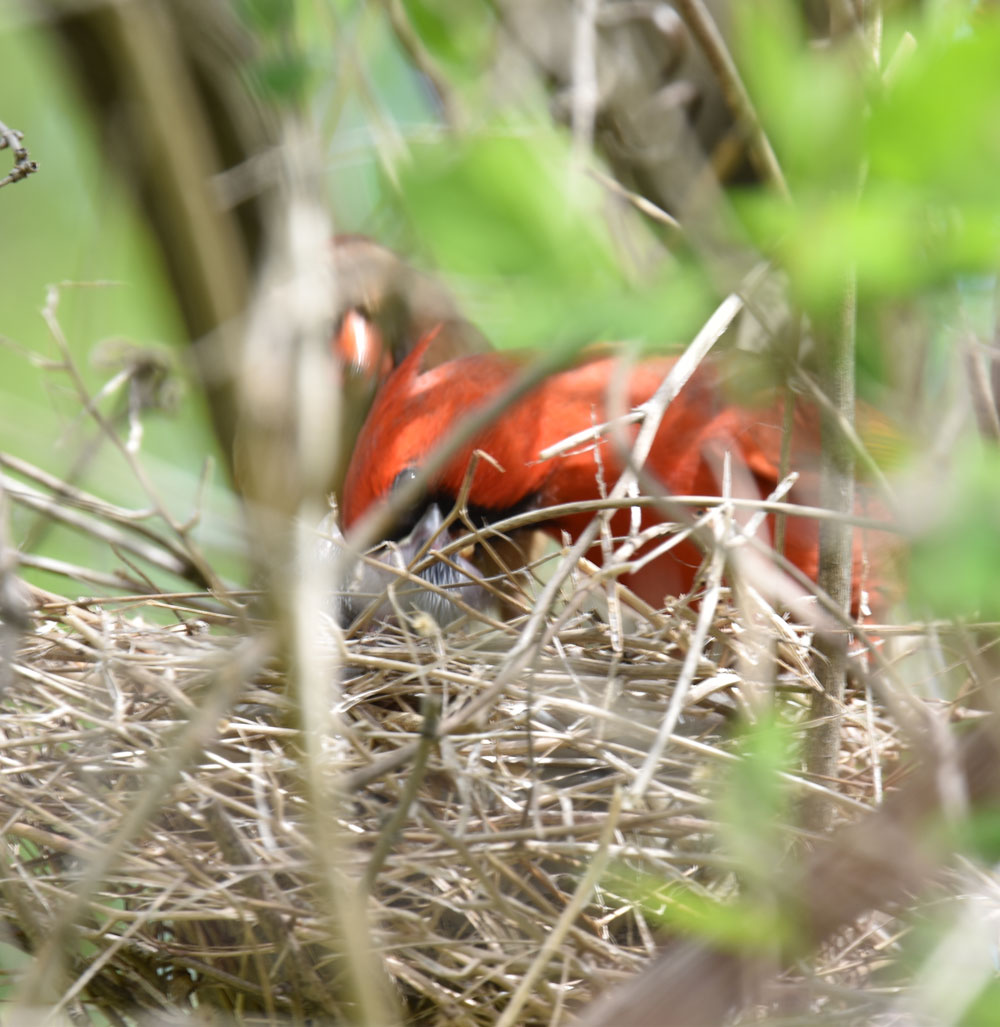
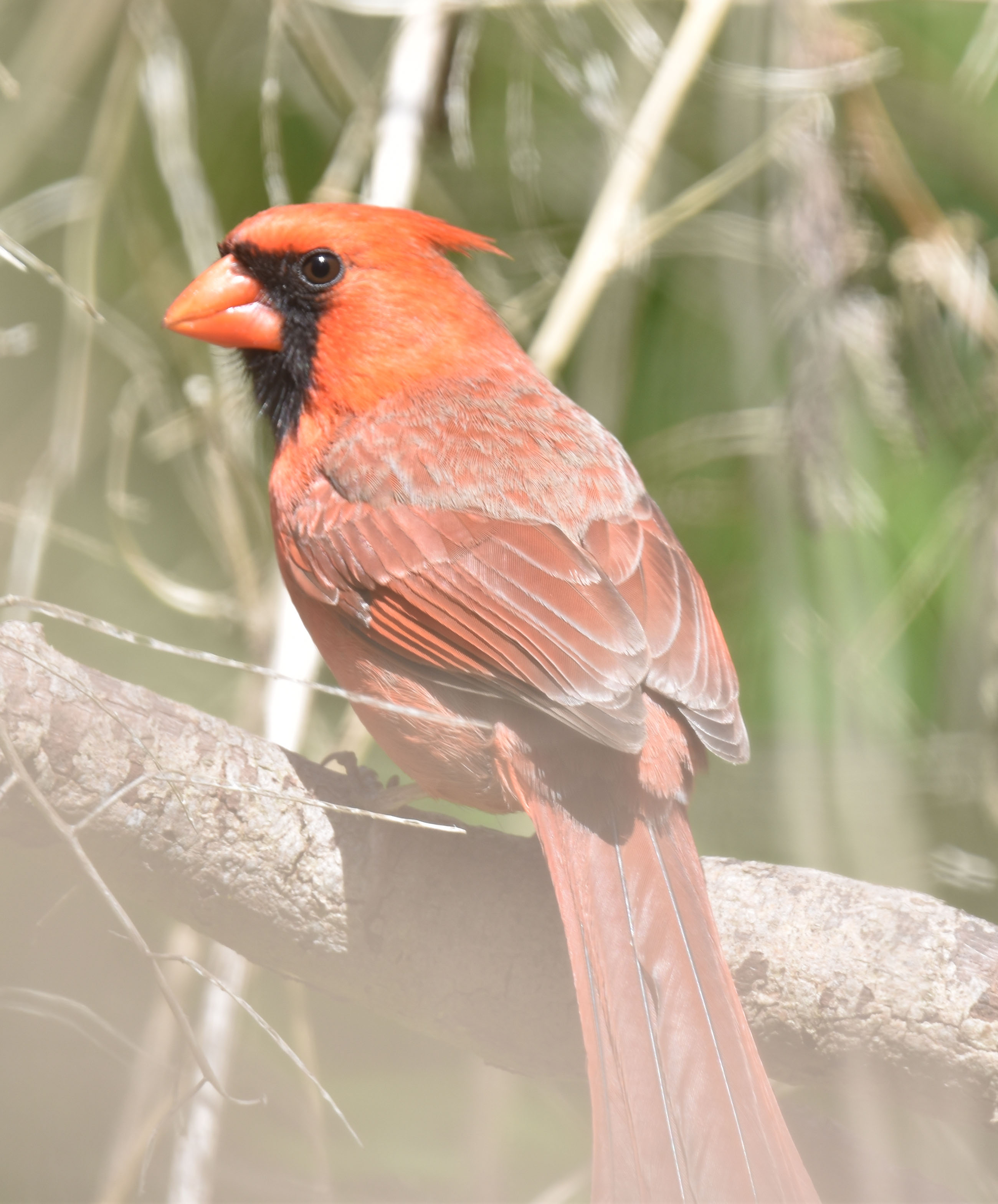
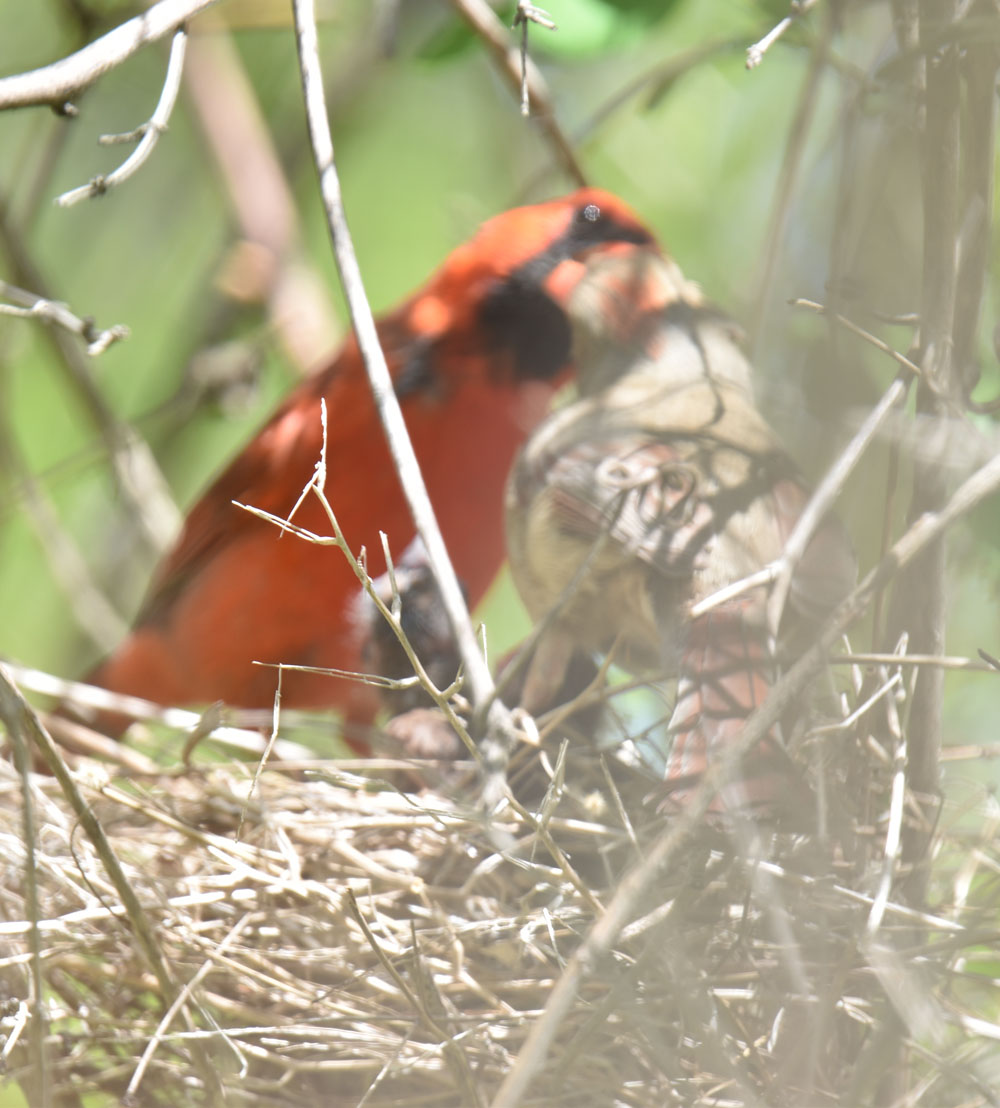
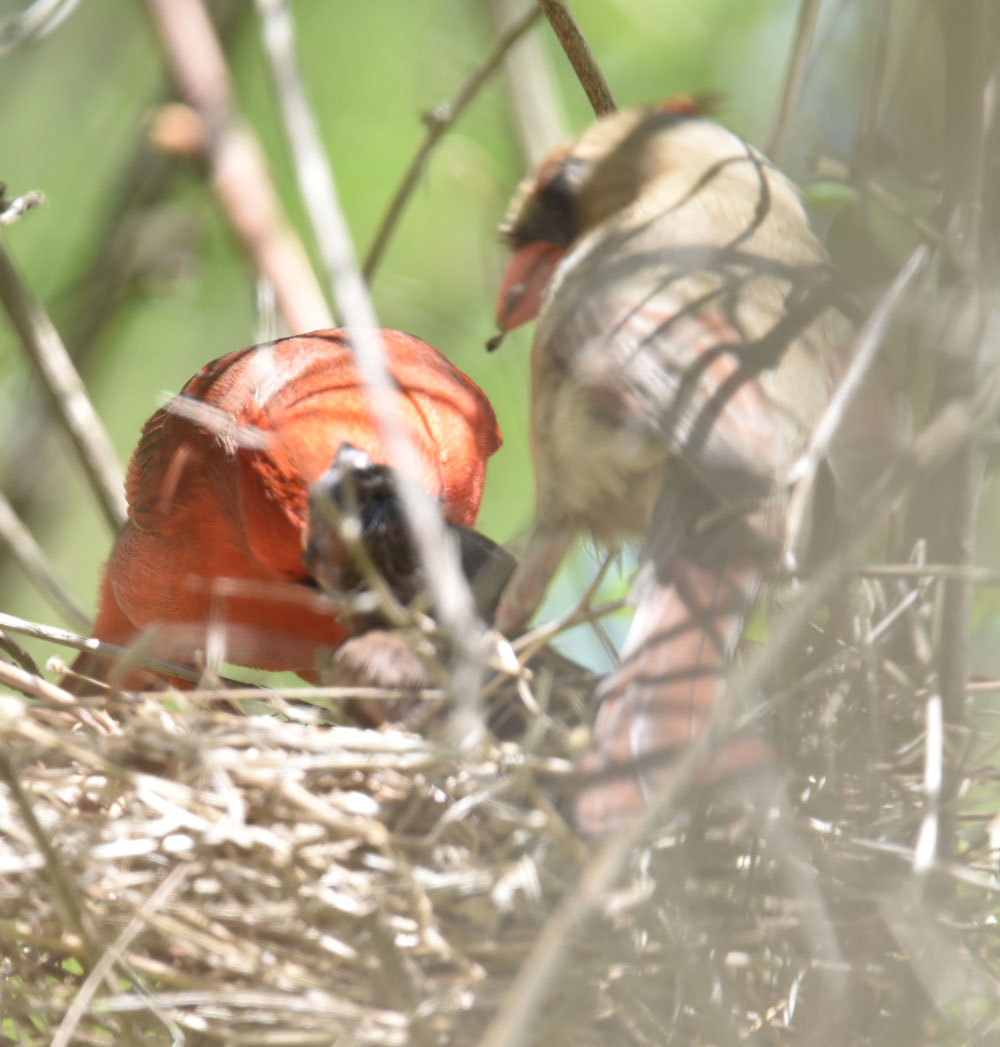
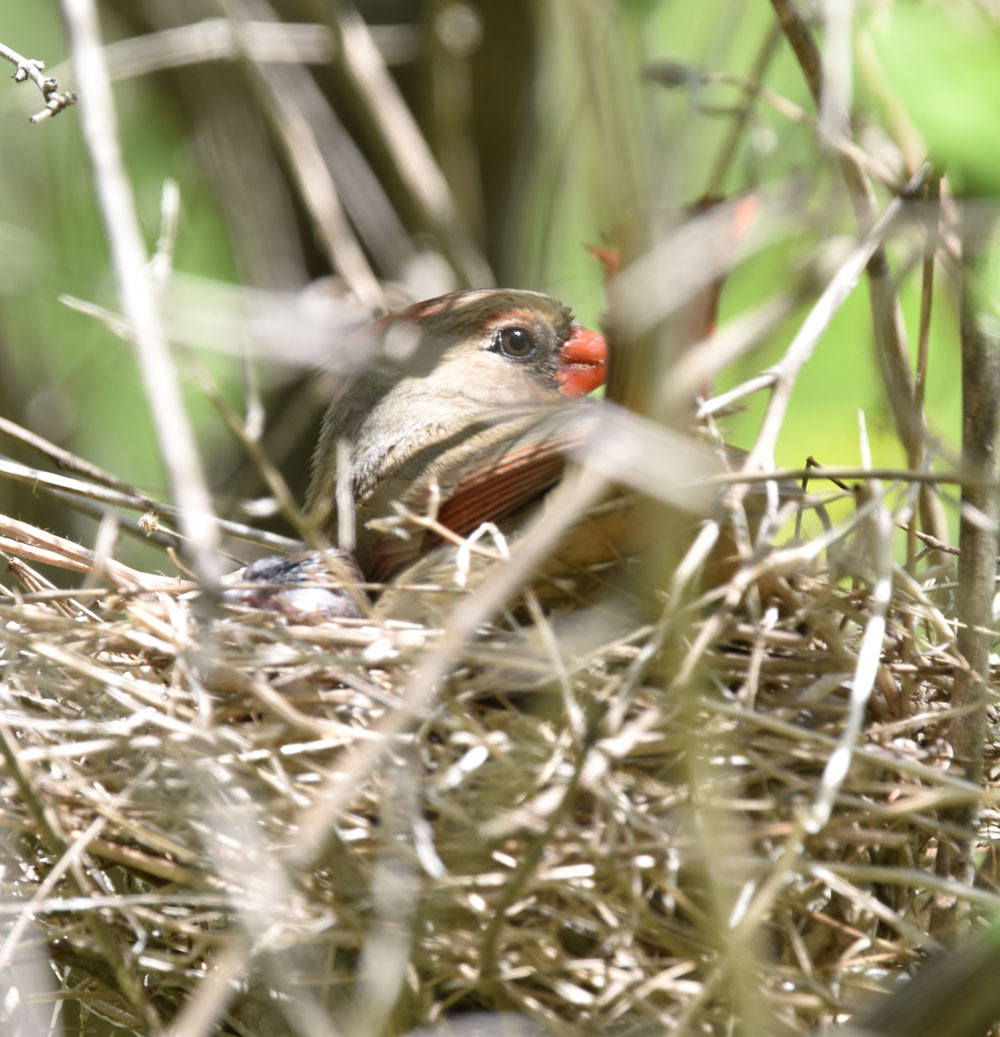
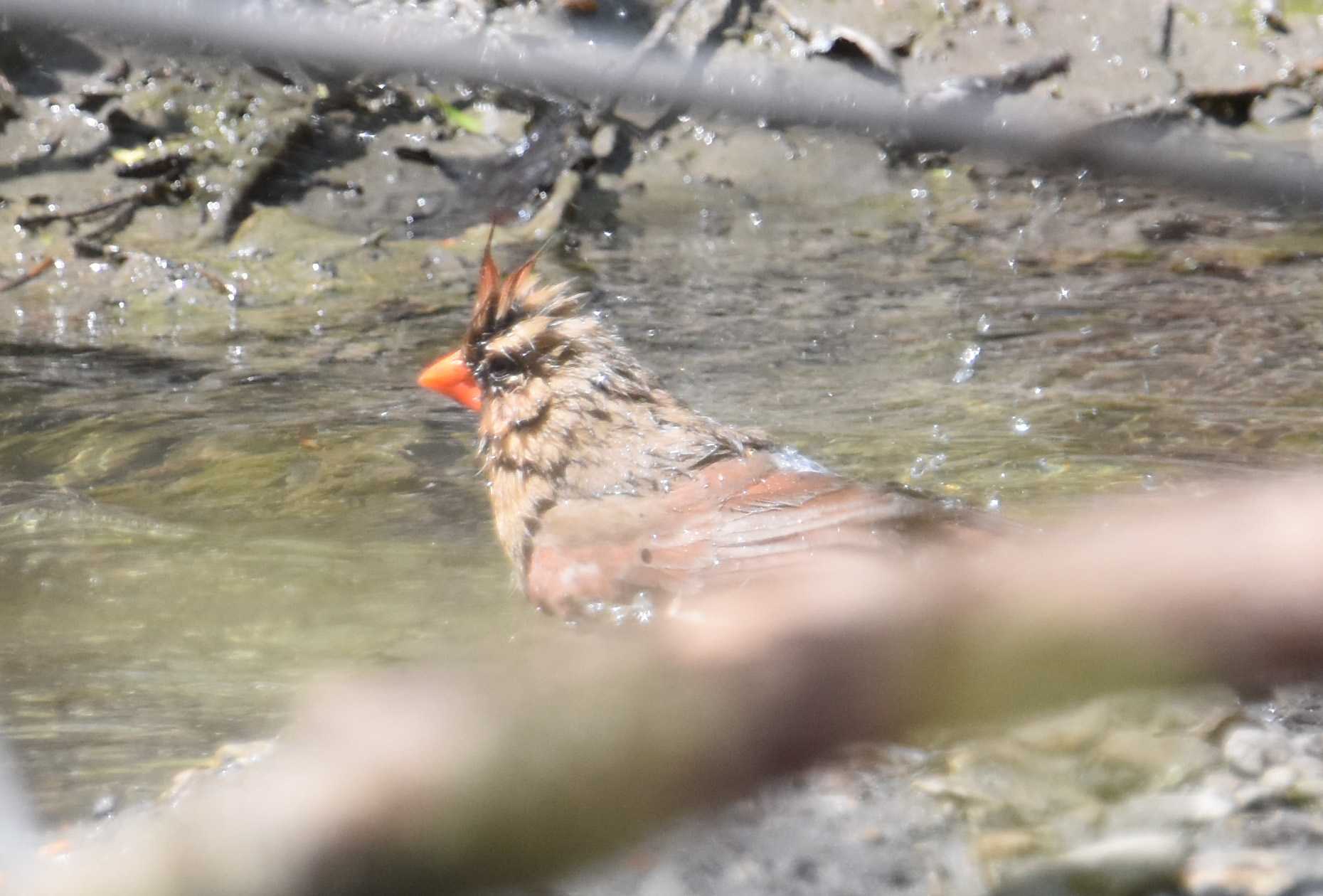
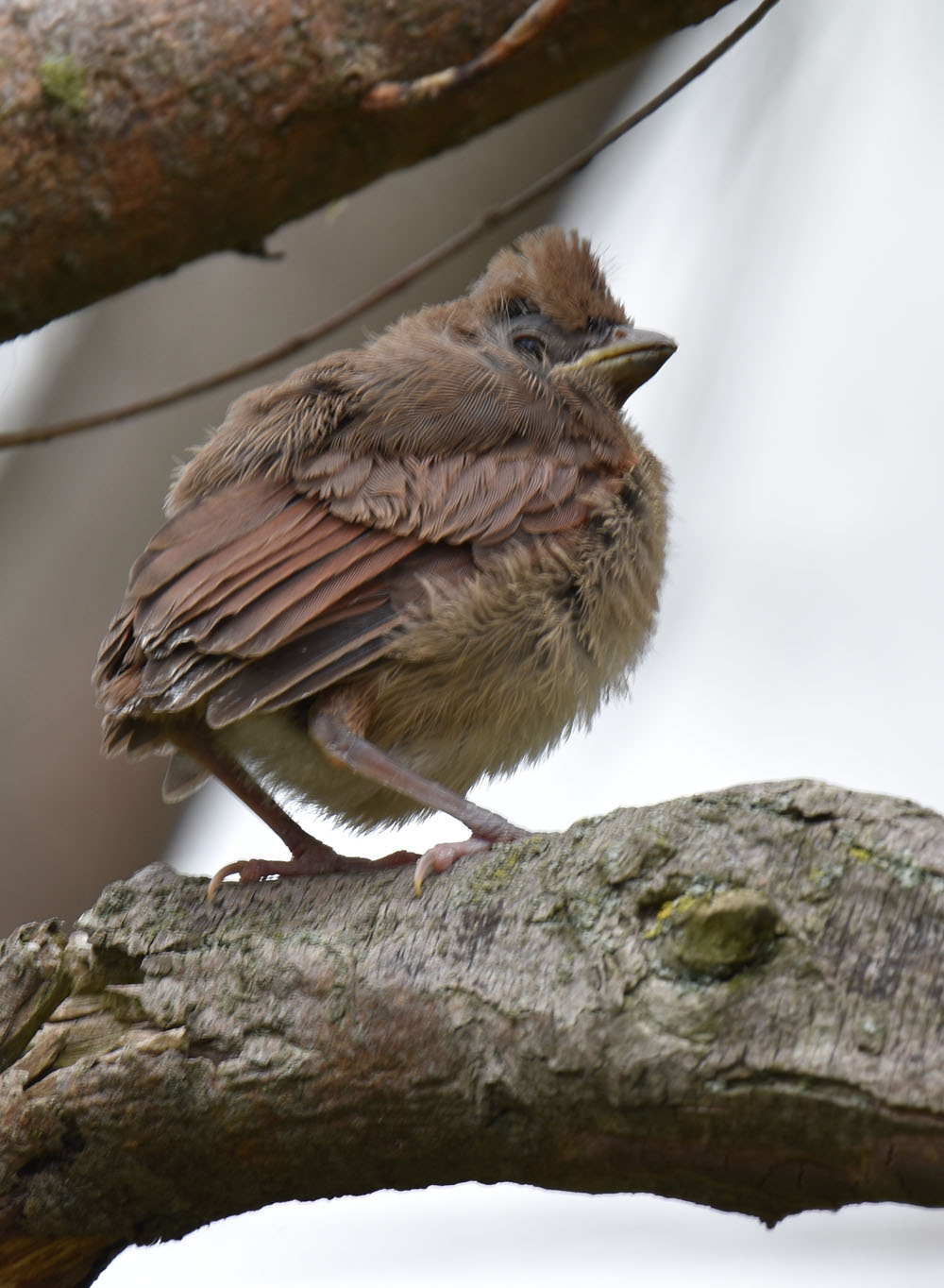
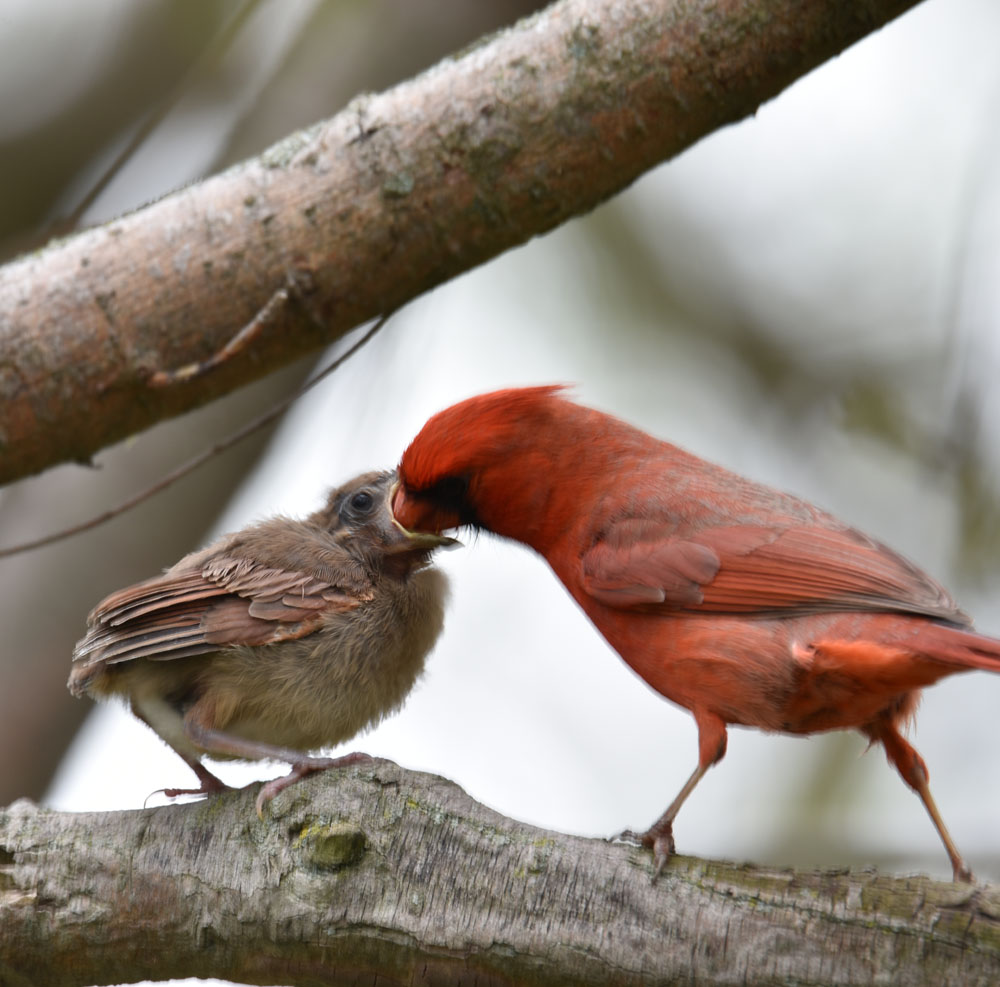
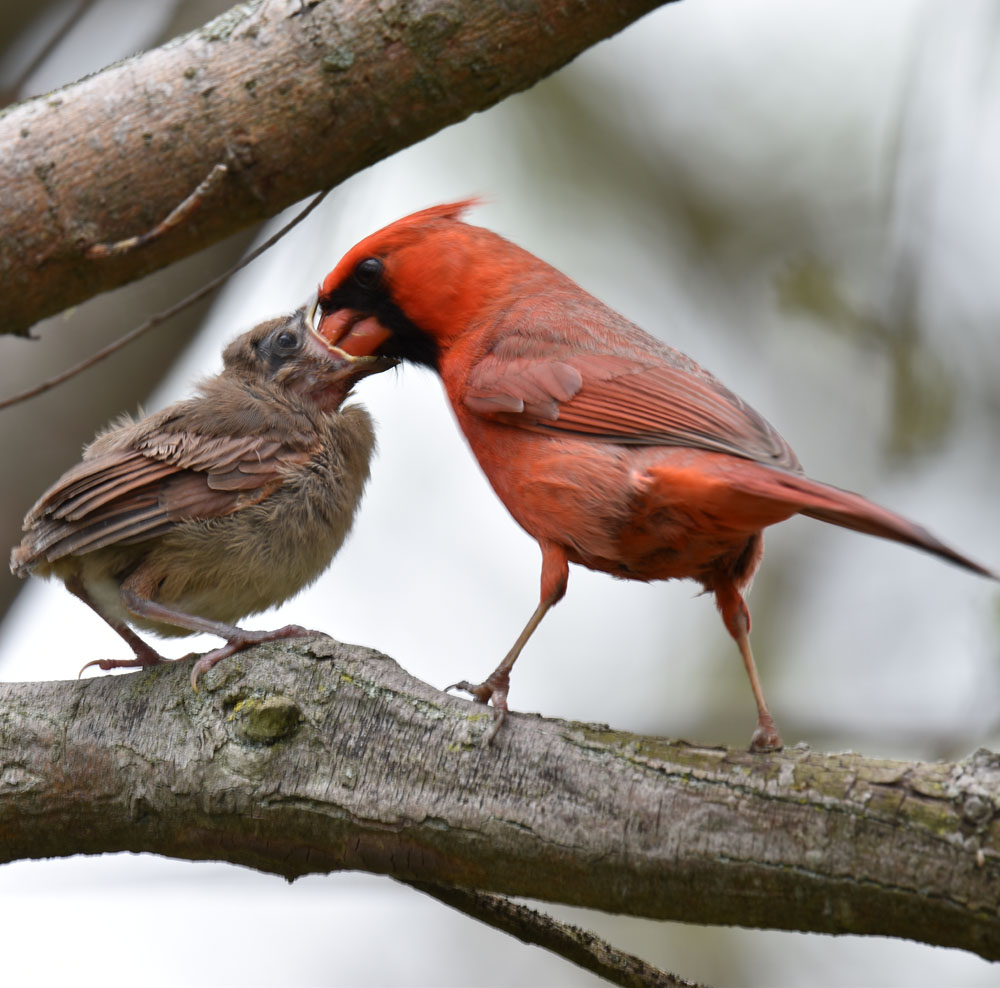

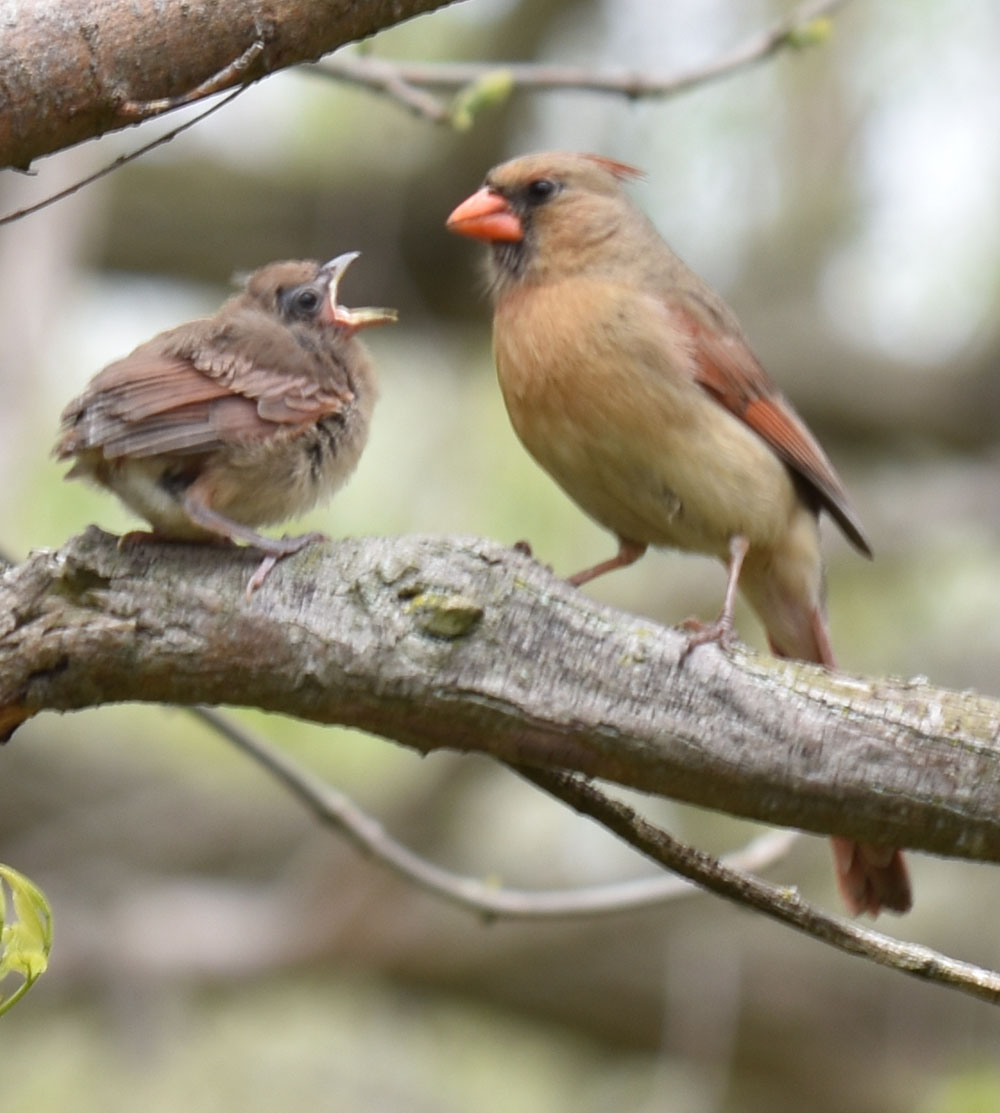
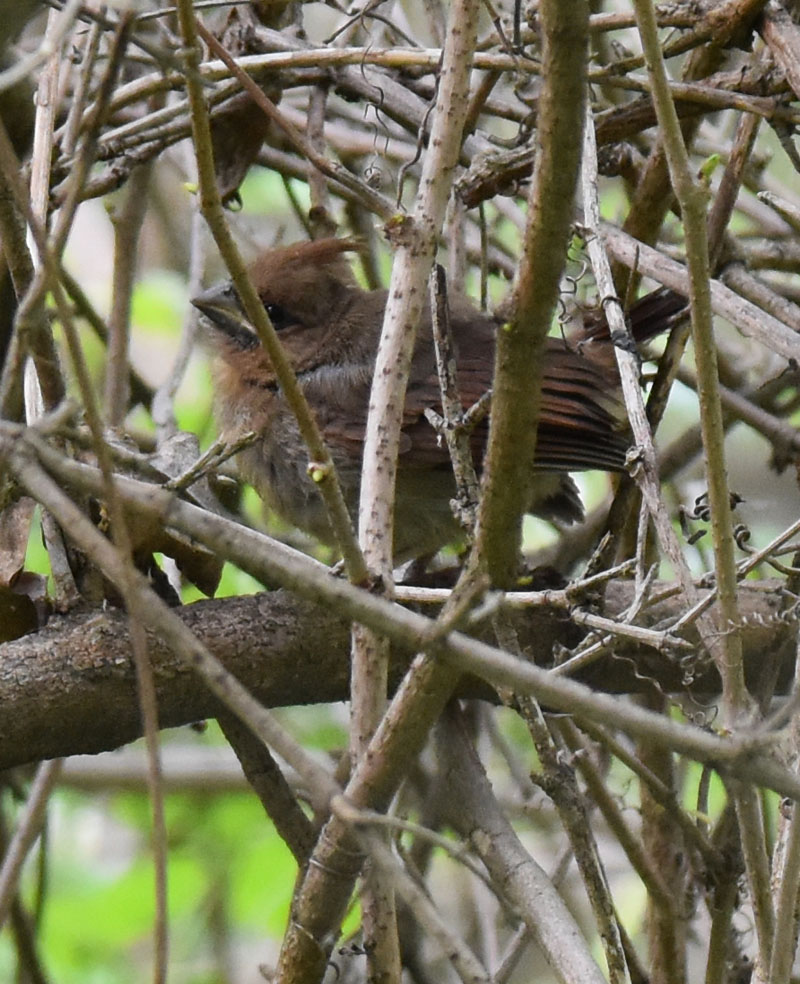
Hi
I am searching to find out the weight/size of a fledgling In comparison to its parents (northern cardinals).
Also, how long is it before the fledglings or do the fledglings depart from their parents ?
Thanks
I find the Cornell U website AllAboutBirds is good for some of these types of questions. On their Life History page for the Northern Cardinal, it says that it takes 11-13 days of incubation for the eggs to hatch, and then the young birds stay in the nest for a further 7 – 13 days. The adults will continue to feed them after they leave the nest. https://www.allaboutbirds.org/guide/Northern_Cardinal/lifehistory
I’m not sure where you’d find the info about the weights of the birds at various ages. Perhaps an animal rescue shelter might track the weights of any young they have to hand raise, but I don’t know if they would publish that information. If their is a wildlife rescue centre for birds near you, you might want to try asking them? One website at http://www.amcvets.com/pages/?pageID=34 has a lot of info about hand raising them, perhaps you could try an email to them to ask?
I hope this helps a bit.
A week before Christmas, 2018 a very young male cardinal started flying against my windows. The parents were nearby. Almost 1 year later he is still doing this, but gently – not aggressive. I still see the adult male with him at times. He sits on the window sill and softly pecks the window. Is this normal??? My daughter says I have a “special needs” bird, since the father is still with him!!
I haven’t heard of that behaviour–sounds like an interesting bird! The window visits may have to do with seeing themselves in a reflection?
This was an awesome article! They are a tricky bird it seems to really be confident about what you’re seeing sometimes, and you’ll ask yourself “is this the same bird?” For instance. It’s really funny that the first few words in this article mentioned southern Ontario, and later, Mississauga, because I live in Oakville and coincidentally found this site after watching my backyard cardinals (been watching them And feeding them for 3 years now!) started to show up with fledglings, and I had recently seen the fledglings like 2 weeks ago and I thought it was strange how they were still fledglings, so I was trying to figure out how long it takes for a fledgling to look like a cardinal, and to get the orange beak etc.. anyway, I did a google search and found this site, and was surprised how it was showing this nest from my neighbouring city. And I don’t think it’s because google chose a local article, because many articles were from other places like West Virginia etc.. anyway, sorry for the long comment lol, I just wanted to say the article was great, and that I agree that they can be tricky! I mean I never saw the nest, but I saw fledglings 2 weeks ago, and today saw a fledgling being fed by the male, was it the same one? I’ll never know lol. I do know that the male adult is the same one I’ve been feeding for 3 years.
Hopefully it is “your” fledgling! They are such lovely birds to share our yards with!